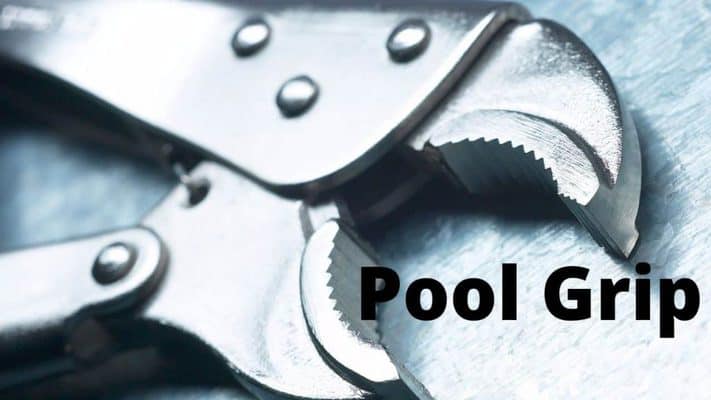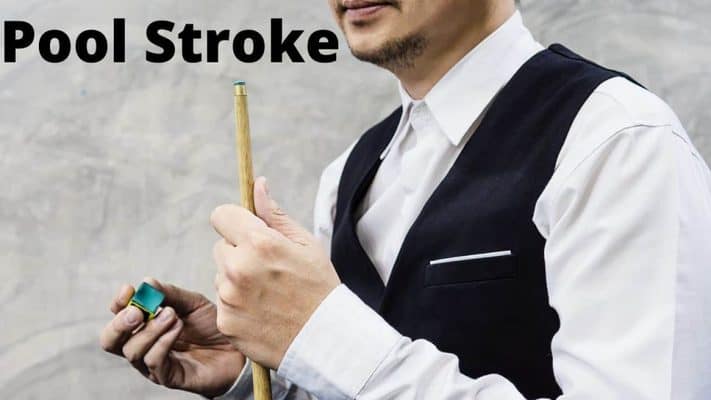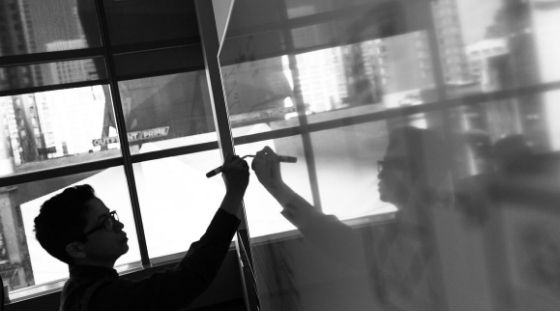Pool Player Bridge Length.
The length of your bridge is the distance between your bridge hand and the cue ball when you take a shot. This distance has an effect on many aspects of your cue action and can in fact affect the accuracy and the smoothness of your stroke.
Here are some examples of professional pool players with really long bridges if you watch the video you can see how the stroke is long and smooth however as previously mentioned this will come at the cost of loss of accuracy if there any are faults whatsoever while delivering the cue.
The short Pool bridge – the good and the bad.
If your bridge is too short you will tend to have a very limited backswing and a very jerky short style which will limit your acceleration through the ball making it very difficult for you to perform some of the shots such as follow-through draw shot and the topspin follow through.
The next example is of Mike Segal a player whose bridge length is fairly short. He was a very successful player and did win the World Championship.
So even though his stroke was short and stabby I have got to say that when it is done right it is a successful way to hold your cue.
Having a short bridge also means that you will be closer to the ball and lose some perspective on the aim.
On the plus side with a short bridge, your accuracy level will be increased and any anomalies in your stroke will be greatly reduced, in other words, if you tend to drop your elbows slightly to the right it will have little effect on the exact location that the tip of your cue strikes the ball.
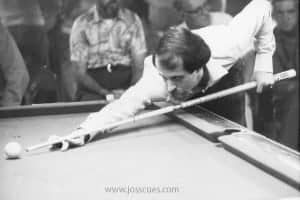
If you look at the picture above the length between Mike’s bridge hand and the cue ball at the address position is about 5-6 inches.
His back grip hand is about 9 inches from the end of the cue butt end probably fairly close to the balance point. He has plenty of room between his backhand and his chest which allows for a good follow through and finish of the stroke.
The long bridge – Good and bad points.
ith a long bridge, players tend to exhibit a much smoother stroke which accelerates through the ball making it easier to can extreme spin on the cue ball for follow-through shots and draw shots. It is easier to sight the shot from a little further back increasing the players’ perspective and accuracy.
One player, in particular, has what I consider to be the longest stroke his name is Santos Sambajon jr.
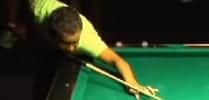
The downside to this is a loss of accuracy caused by greater amplification of stroke mistakes. In other words, the more cue shaft in front of your hand the more any imperfections will show up in your stroke.
In the above image of Santos his front hand is around 15 inches from the white ball at the address position this gives a very good view of the potting angle but demands absolutely straight cueing for accuracy.
His rear hand is about 8 inches from the end of the cue butt. His shoulders are turned in line with the shot. So he probably naturally fell into this position due to his fairly short height.
Some Basic Physics for Those in Doubt.
In order for this to make sense for the comparison I will assume:
- That the distance between any pool players backhand grip and the “v” or loop in the forward bridge hand will remain the same, 4 feet.
- Neither player will make a subconscious adjustment in their alignment.
Player #1 has a perfectly straight alignment and cue action.
The length of his bridge has no effect on the accuracy of his shots.
Player #2 has a 1″ elbow movement to the right as he strokes the cue stick.
If the length of his bridge is 6 inches he will have a 0.125” (1/8″) error at the cue ball.
48 / 1 = 6 / 0.125
However, if the length of his bridge is 12 inches this will translate into a 0.25” (1/4″) error at the cue ball.
48 / 1 = 12 / 0.25
It doesn’t seem to be that great of a difference but the error could easily result in applying side spin by accident.
Personal Experiments in Bridge Length
During my coaching sessions one of the things pointed out by my coach was my tendency to play with an overly long bridge. He said that could be reducing my accuracy. I didn’t realize what I was doing as no one had ever pointed it out before. I had always played that way and it seemed fine to me.
Then over the next few weeks experimented with reducing the distance between my bridge and the white ball. I found that on certain shots it helped to shorten up but on other shots staying fairly long was ideal.
Billiard Bridge length and Pivot Points.
Pool cues have a pivot close to the bridge point.
This point varies according to the taper of the shaft which could be standard, European or pro taper. The size of the tip/ferrule. The type of material used mostly wood, carbon fiber or a combination of both.
Most shaft manufacturers will state the pivot point length on low deflection shafts. That way you can select a shaft with a pivot point that suits your natural bridge length.
- Cuetec
- OB1 and OB2
- Predator
- Meucci
With your bridge “V” at the pivot point, the deflection of the shaft will cancel out the cue ball squirt when playing shots with sidespin inside and outside English.
Note: Not exactly but with practice and the right ball speed the amount of cue ball lateral movement can be almost eliminated.
This is especially true when using “backhand English.”
So, does your bridge length matter when playing pool? Most definitely!
Http

